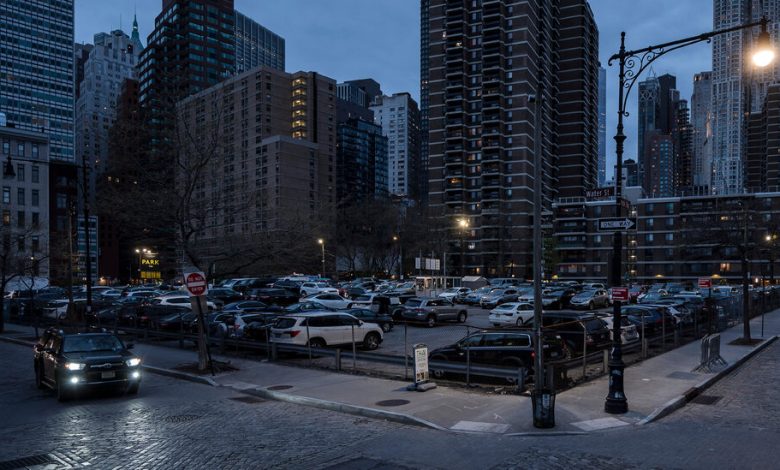In Affordable Housing v. Parking Lot, a Judge Chooses the Lot

Earlier this month, after he declined to throw out the New York attorney general’s fraud suit against Donald Trump — calling the president’s petition “frivolous” and suggesting he would sanction his lawyers — Justice Arthur F. Engoron delivered a quieter decision that reverberated more fractiously within Manhattan’s liberal ecosystem. The matter before the state supreme court justice involved the fate of an empty plot of land on Water Street that is technically within the perimeter of the South Street Seaport Historic District, with all the restrictions such a designation implies. Despite the omnipresent urgency of the city’s housing crisis, the parcel, at 50,000 square feet, had remained a historically landmarked parking lot for decades.
The vibe shift arrived in 2018 when a Texas real-estate firm, the Howard Hughes Corporation, bought the lot with the intention of constructing a 26-story apartment building that would include commercial space, anticipating the inevitable community backlash over scale. Although the project had the support of city officials, it would still need approval from the Landmarks Preservation Commission. In a highly unusual realignment of traditional sympathies, the commission, hearing the case two years ago, did not side with the local opposition. Instead it signed off on a prospective building that would stand at 324 feet.
The building at 250 Water Street would be much taller than anything else in the compact historic precinct, whose precise borders are meaningful to preservationists but not altogether obvious to the ordinary flâneur, who experiences the Seaport as a performatively consumerist extension of the financial district — one where, as of last month, it became possible to ‘‘immerse yourself in the world of the Golden Girls” by way of a pop-up restaurant, The Golden Girls Kitchen.
Walking around the neighborhood, you might find it hard to understand the objections to a venture that would be half the size of a beleaguered glass skyscraper meant for waterfront luxury condominiums — the Seaport Residences — partially up, right nearby on Maiden Lane but nevertheless outside the district. Similarly, the Water Street project would stand around 500 feet shorter than Frank Gehry’s 8 Spruce Street two very visible blocks away, a building that introduces into the Lower Manhattan skyline the impression of a steel-gray towel in the process of getting wrung dry.
By contrast, the renderings for 250 Water Street show it in anodyne modern red brick, putting the building in a less discordant dialogue with the Seaport’s 200-year-old rowhouses. Unmoved, a trio of neighborhood groups that came together to form the Seaport Coalition sued the commission over the ruling. Justice Engoron ruled in its favor, putting a stop to a project where excavation had already begun.
Although the developer plans to appeal the decision, the sequence provides a particularly confounding example of the challenge to economically integrate wealthy neighborhoods in New York, even after the successful campaign to rezone SoHo, a civic debate that consumed the end of the de Blasio years. The proposal for the Water Street site includes 270 rental apartments, at least 70 of which would remain affordable, significantly, to those making an average of 40 percent of the area’s median income.
Typically in neighborhoods where real estate is so expensive, mixed-income developments set earnings thresholds at a higher rate. In this instance, a family of four making $45,000 a year — less than what two parents would bring home if each worked full time at $15-an-hour minimum-wage jobs — would qualify to live in a new building downtown, close to every conceivable means of public transportation and highly regarded public schools including Peck Slip, across the street.
Among the many ironies underscoring the fight over the development is that one of the groups in the Seaport Coalition — a group worried about toxins and the broader disruption to students already fortunate enough to go to Peck Slip or to the adjacent, private Blue School — calls itself Children First. From the same myopic vantage, another of the coalition’s founding organizations is made up of residents from the site’s neighboring Southbridge Towers, which were built as subsidized cooperative housing through the Mitchell-Lama program in the 1960s but privatized nine years ago, allowing owners to sell their apartments at market rate.
What opponents argued, and where Justice Engoron emphatically agreed in his seven-page ruling, is that the landmarks commission, an independent body entrusted with the responsibility of preserving architecturally and historically significant buildings, overstepped its authority when it engaged with developers over their pledge of millions of dollars toward the foundering Seaport Museum, established in 1967 as a place to commemorate the city’s maritime history.
The judge saw this as a quid pro quo, even though it came, by his own admission, “with the laudable purpose of museum funding.” But the practice of extracting civic benefits from private enterprise has been the default setting for any ambitious development for the past 20 years. The Gehry building on Spruce contains a public elementary and middle school. When it was completed, One Clinton, a luxury condominium building on the edge of Brooklyn Heights, delivered a modernized branch of the local public library.
The implication is that the commission behaved as a political entity when it was not entitled to — overlooking the extent to which it is immersed in politics all the time, particularly as it has shown an increasing interest in naming landmarks for their cultural rather than aesthetic currency. When the commission unanimously voted in 2015 to grant landmark status to the Stonewall Inn, the Greenwich Village bar sacrosanct in the movement for L.G.B.T.Q. rights, it became the 50th building to receive the distinction for meaning over appearance out of 33,000 the commission had designated over the previous half century. Last month the commission gave landmark status to Julius’, another Village bar important in the L.G.B.T.Q. community not long after it recognized a building just west of Prospect Park as an individual landmark, honoring it as the storage site of the country’s largest and oldest archive of material related to lesbian life.
Opponents of the Water Street project have repeatedly pointed out that a series of proposals submitted in the 1980s, ’90s and early 2000s were all rejected by the landmarks commission on the grounds that in each case whatever was suggested created a visual confusion about the district’s outlines. But the argument that the commission should be bound to precedent ignores the altered realities of an increasingly alienating housing market that has escalated to a humanitarian emergency. In November roughly 67,000 people were sleeping in the city’s homeless shelters every night, more than six times the population in 1983. How do we weigh the view from the Brooklyn Bridge against that?





